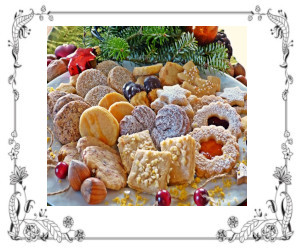Food Tip of the Day
Before the cookies that everyone enjoys during the holiday season became called cookies, they were little baked cakes called Koeptje by the Dutch. The moniker cookie appeared in print for the first time in 1703.
The origin of the Christmas cookie has its history of beginning during the Middle Ages. For 10 centuries, from the 5th to 15th century, peoples in Europe and surrounding areas celebrated winter solstice festivals. People gathered and shared whatever bounty they had harvested that year. From the 16th century onward, Christianity took over the pagan festivals, but the traditional feasting continued.
When exploration of the world began, sugar, along with nutmeg, black pepper, cinnamon, ginger, cloves, and other spices became available to the average home kitchen. Cookies were food items that could be made and stored without refrigeration.
From 1600 to 1800 many cookies were made as simple squares or circles of ornaments for trees and to be hung in windows. The late 1800’s to early 1900’s brought new cooking gadgets called cookie cutters, so more shapes were possible for decorating.
Frosting, also called icing, was developed in the 1600’s. It was a very simple recipe of egg whites and sugar. After the mixture cooled on the cookie, it resembled ice so received the name of icing.
Today, cookies are still made with the same spices, improved frostings for decorating, and many shapes of cookie cutters have been added.
For more information on Christmas cookies read:
Christmas Cookie Santa Trivia
Tips on Making Good Cookies
How to Make Your Cookies Soft
Click here for a great assortment of Christmas cookie cutters at Amazon
Author Marilyn Pokorney
Copyright Marilyn Pokorney 2022




